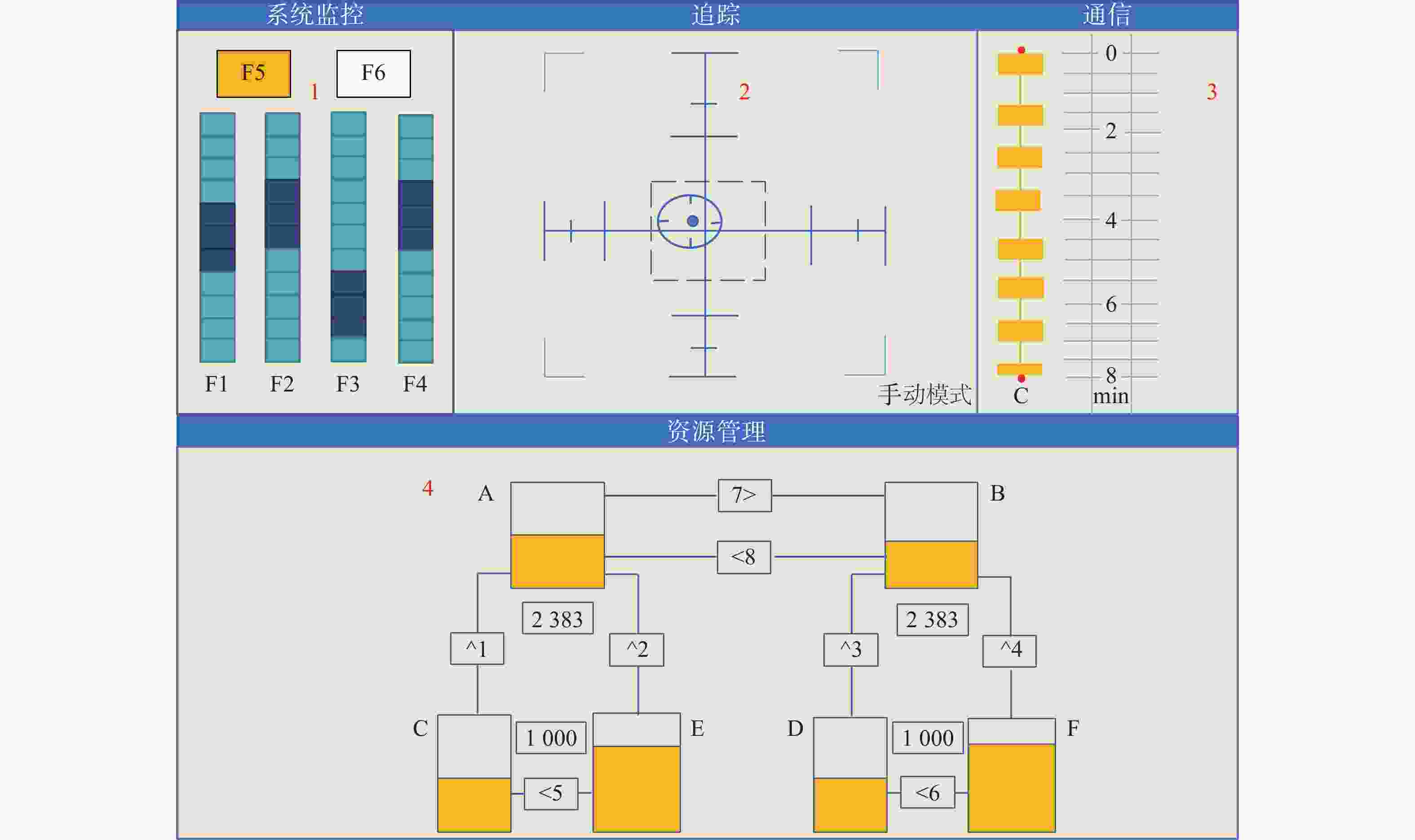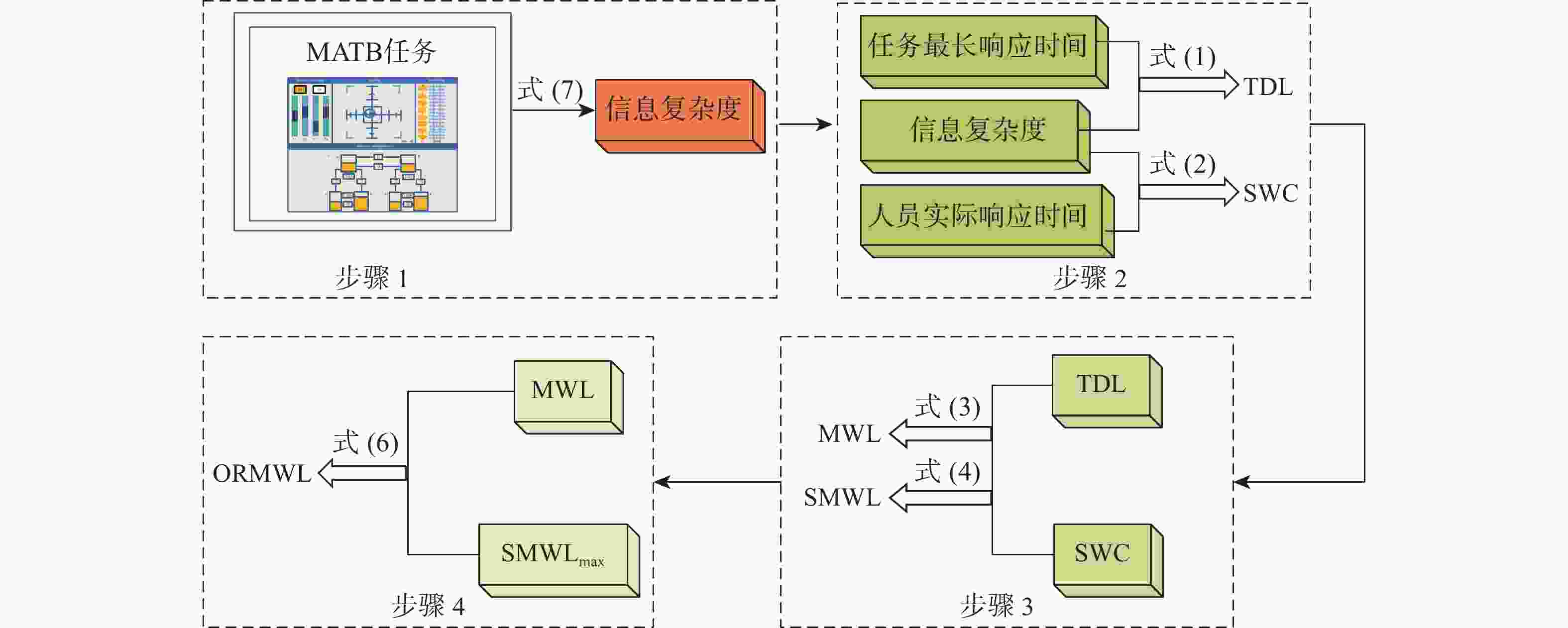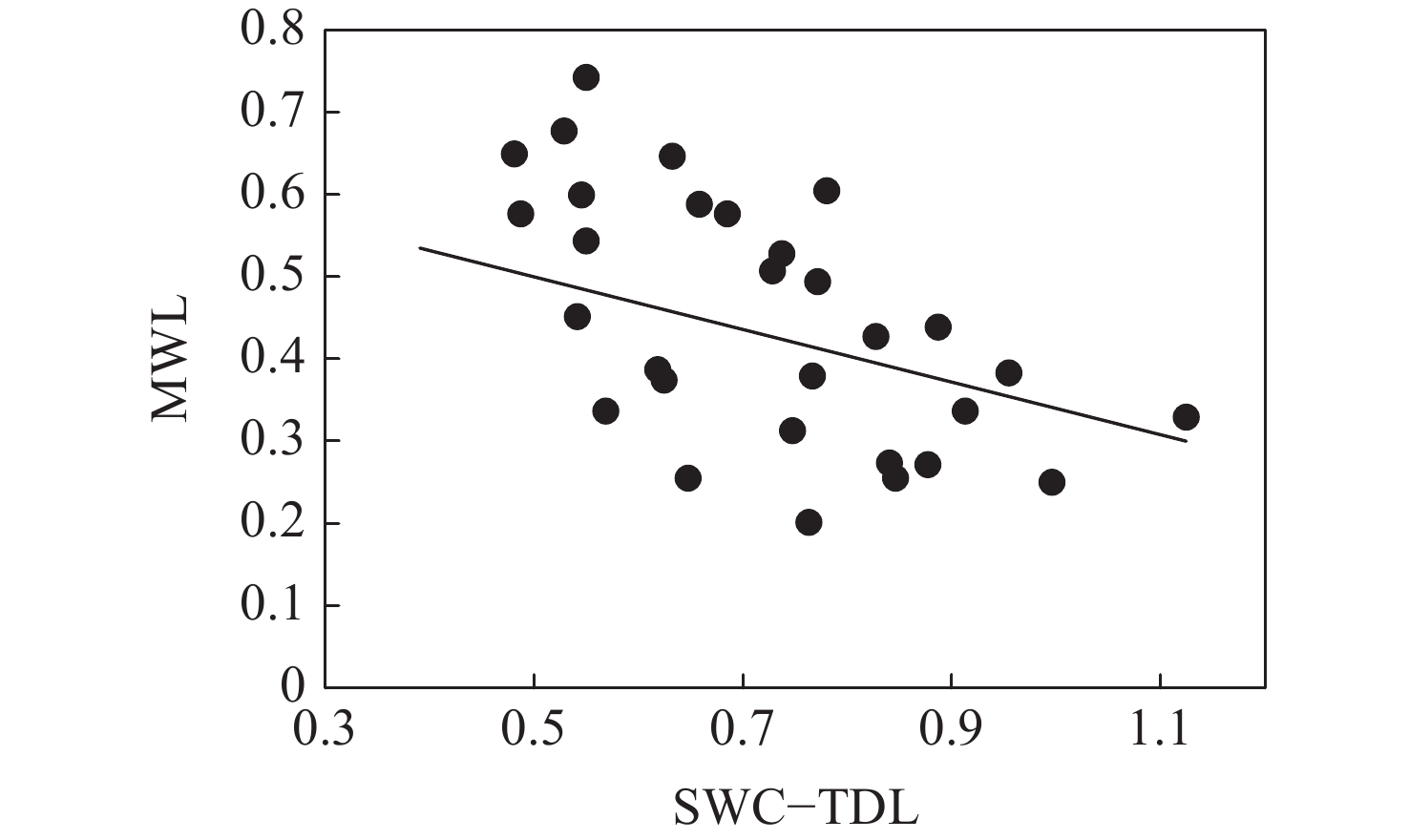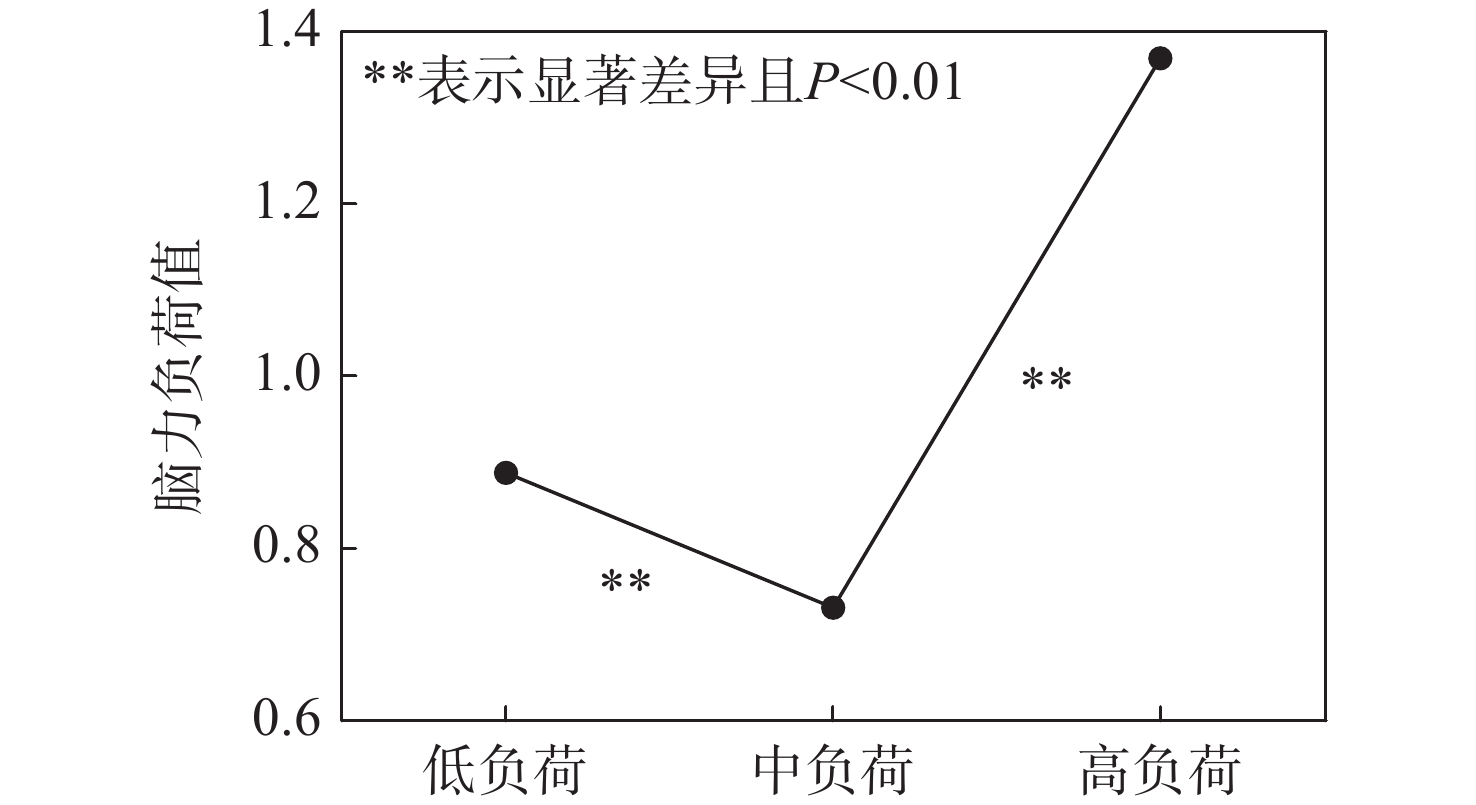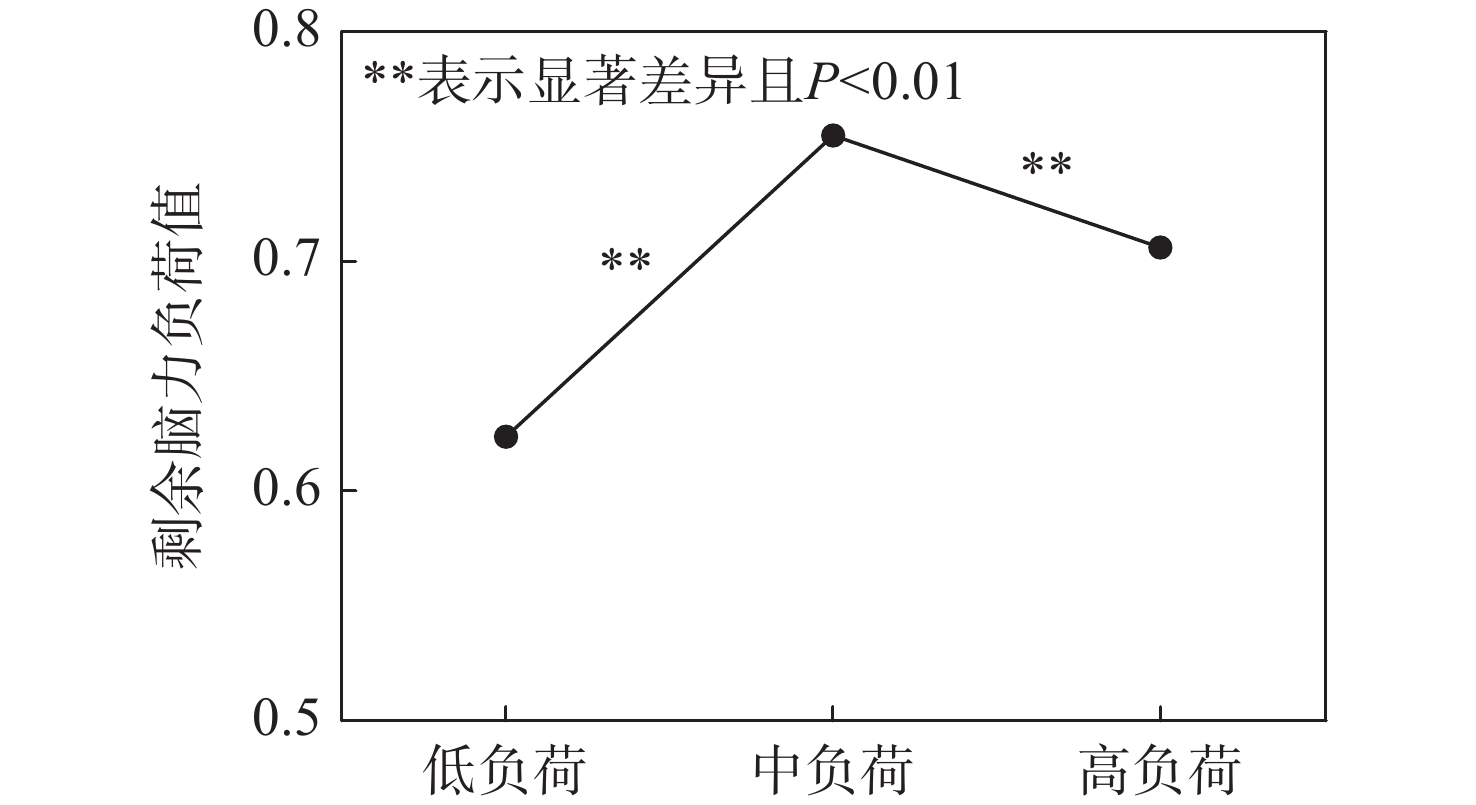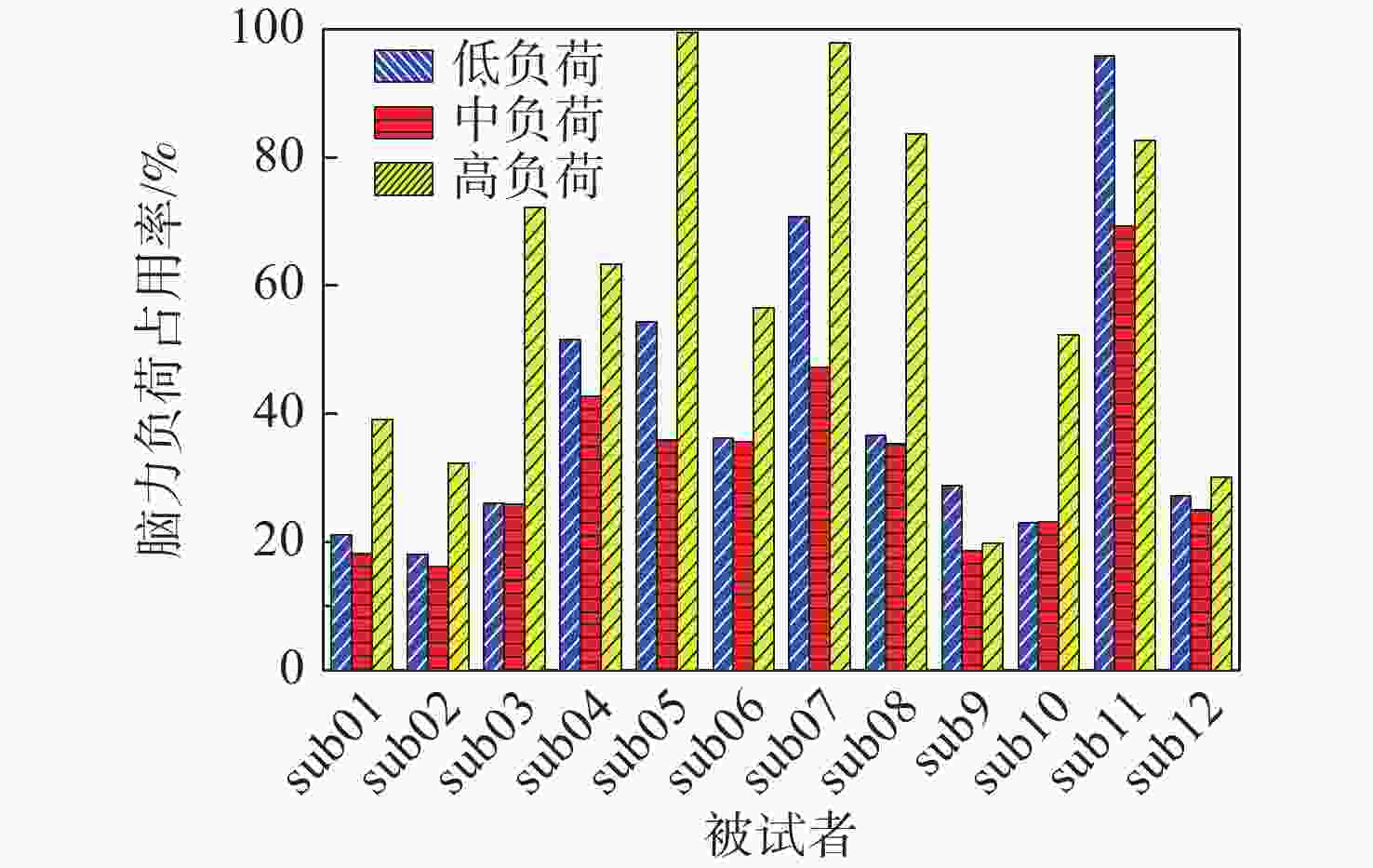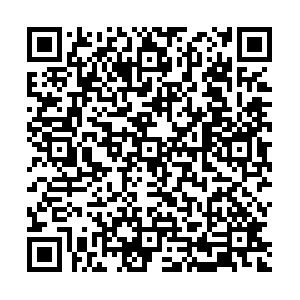-
摘要:
为评估飞行员在执飞任务中的脑力负荷,建立了基于任务需求负荷(TDL)和人员负荷能力(SWC)的脑力负荷量化评估模型,并据此提出剩余脑力负荷(SMWL)和脑力负荷占用率(ORMWL)的评估方法。采用信息熵法对信息显控界面上的信息量进行量化。基于多属性任务组(MATB)平台设计的执飞情境实验,对15名被试人员在不同任务水平下的脑力负荷状态进行评估,以验证所建模型的有效性。结果表明:SMWL模型方法的脑力负荷值与NASA-TLX主观量表值存在显著相关性。此外,任务水平的增加对人员的脑力负荷值有显著的U型影响。因此,通过所建模型,基于SMWL和ORMWL的概念,可以对飞行员执行飞行任务时的脑力负荷进行实时、定量的评估,为脑力负荷的量化提供了一种新的思路。
Abstract:In order to evaluate the mental workload of pilots in flight task, a quantitative evaluation model of mental workload based on task demand load (TDL) and staff workload capacity (SWC) was established. Based on this, the evaluation methods of surplus mental workload (SMWL) and occupancy rate of mwl (ORMWL) were proposed. The information entropy method was used to quantify the amount of information on the information display and control interface, based on the flight situation experiment designed by the MATB task platform, in order to verify the validity of the model, the mental workload of 15 subjects at different task levels was evaluated. Based on the flight situation experiment designed by the MATB task platform, the information entropy method was used to quantify the amount of information on the information display and control interface. In order to verify the validity of the model, the mental workload of 15 subjects at different task levels was evaluated. The results show that the SMWL value of the SMWL model method was correlated with the NASA subjective scale value. And, the increase of task level had a significant U-shaped impact on the mental workload of the staff. Meanwhile, the increase of task level had a significant U-shaped impact on the mental workload of the staff. Therefore, the model established in this paper and based on the concepts of SMWL and ORMWL can be used to conduct a real-time and quantitative evaluation of the mental workload of pilots during flight tasks, providing a new idea for the quantification of mental workload.
-
表 1 MATB子任务信息
Table 1. Details of MATB subtasks
任务名称 区域 任务内容 系统监控 1 要求被试监控F1~F4刻度栏的指针,当动态指针触及任意刻度栏的上下3格时,用鼠标左键点击对应的刻度栏 追踪 2 要求被试在手动模式下用摇杆将目标保持在网格中心,在自动模式下不需要任何动作 通信 3 要求被试监控通信刻度中激活的通信任务,当激活的通信任务,即左侧的(绿色)方形滑块触碰到上方圆(红)点时,按键盘的右方向键进行响应 资源管理 4 要求被试监控编号为1~8的油泵状态,当油泵出现故障(变红)时,用鼠标左键点击对应的油泵进行响应 表 2 实验流程表
Table 2. Experimental process
步骤序号 实验内容 时间/min 1 实验培训与准备 60 2 静息实验 5 3 正式实验1 12 4 填表 2 5 休息 6 6 正式实验2 12 7 填表 2 8 休息 6 9 正式实验3 12 10 填表 2 11 确定量表维度权重 1 表 3 MATB子任务最大响应时间及信息复杂度
Table 3. MATB subtask maximum response time and information complexity
任务名称 最长响应时间/s 信息复杂度 系统监控 6 2.3026 追踪 8 1.7481 通信 10 0.8856 资源管理 8 0.9831 -
[1] SHERIDAN T B. Mental workload in decision and control[C]// 1979 18th IEEE Conference on Decision and Control including the Symposium on Adaptive Processes. Piscataway: IEEE Press, 2007: 977-982. [2] 柳忠起, 袁修干, 刘涛, 等. 航空工效中的脑力负荷测量技术[J]. 人类工效学, 2003, 9(2): 19-22. doi: 10.3969/j.issn.1006-8309.2003.02.006LIU Z Q, YUAN X G, LIU T, et al. Measurement technology of mental workload in aviation ergonomics[J]. Chinese Ergonomics, 2003, 9(2): 19-22(in Chinese). doi: 10.3969/j.issn.1006-8309.2003.02.006 [3] 康卫勇, 袁修干, 柳忠起, 等. 飞机座舱视觉显示界面脑力负荷综合评价方法[J]. 航天医学与医学工程, 2008, 21(2): 103-107. doi: 10.3969/j.issn.1002-0837.2008.02.006KANG W Y, YUAN X G, LIU Z Q, et al. Synthetic evaluation method of mental workload on visual display interface in airplane cockpit[J]. Space Medicine & Medical Engineering, 2008, 21(2): 103-107(in Chinese). doi: 10.3969/j.issn.1002-0837.2008.02.006 [4] QU H Q, SHAN Y P, LIU Y Z, et al. Mental workload classification method based on EEG independent component features[J]. Applied Sciences, 2020, 10(9): 3036. doi: 10.3390/app10093036 [5] 张洁, 庞丽萍, 完颜笑如, 等. 基于脑电功率谱密度的作业人员脑力负荷评估方法[J]. 航空学报, 2020, 41(10): 123618.ZHANG J, PANG L P, WANYAN X R, et al. Method for operator mental workload assessment based on power spectral density of EEG[J]. Acta Aeronautica et Astronautica Sinica, 2020, 41(10): 123618(in Chinese). [6] SIEGEL A I, WOLF J J. Man-machine simulation models[M]. Hoboken: Wiley-Inter-Science, 1969. [7] WICKENS C D. Mental Workload: Assessment, prediction and consequences[C]//LONGO L, LEVA M. International Symposium on Human Mental Workload: Models and Applications. Berlin: Springer, 2017: 18-29. [8] 王洁, 方卫宁, 李广燕. 基于多资源理论的脑力负荷评价方法[J]. 北京交通大学学报, 2010, 34(6): 107-110. doi: 10.3969/j.issn.1673-0291.2010.06.024WANG J, FANG W N, LI G Y. Mental workload evaluation method based on multi-resource theory model[J]. Journal of Beijing Jiaotong University, 2010, 34(6): 107-110(in Chinese). doi: 10.3969/j.issn.1673-0291.2010.06.024 [9] NEERINCX M A, KENNEDIE S, GROOTJEN M, et al. Modeling the cognitive task load and performance of naval operators[C]//International Conference on Foundations of Augmented Cognition. Berlin: Springer, 2009: 260-269. [10] NEERINCX M A, VELTMAN J A. How to manage cognitive task load during supervision and damage control in an all-electric ship[J]. IASME Transactions, 2012, 2(1): 253-258. [11] COLIN T R, MIOCH T, SMETS N J J M, et al. Estimating an operator’s cognitive state in real time: A user modeling approach[C]// 2012 IEEE RO-MAN: The 21st IEEE International Symposium on Robot and Human Interactive Communication. Piscataway: IEEE Press, 2012: 627-633. [12] 张安, 任卫, 汤志荔, 等. 基于CTL模型和任务绩效的驾驶舱动态功能分配方法[J]. 火力与指挥控制, 2018, 43(7): 151-156. doi: 10.3969/j.issn.1002-0640.2018.07.028ZHANG A, REN W, TANG Z L, et al. Dynamic function allocation for cockpit based on CTL model and task performance[J]. Fire Control & Command Control, 2018, 43(7): 151-156(in Chinese). doi: 10.3969/j.issn.1002-0640.2018.07.028 [13] XIAO X, WANYAN X R, ZHUANG D M. Mental workload prediction based on attentional resource allocation and information processing[J]. Bio-Medical Materials and Engineering, 2015, 26(S1): S871-S879. [14] HEILIGERS M, VAN HOLTEN T, MULDER M. Factors that influence pilot task demand load during area navigation approaches[J]. Journal of Aircraft, 2011, 48(3): 975-994. doi: 10.2514/1.C031188 [15] HEILIGERS M M, VAN HOLTEN T, MULDER M. Predicting pilot task demand load during final approach[J]. The International Journal of Aviation Psychology, 2009, 19(4): 391-416. doi: 10.1080/10508410902983987 [16] COMANS J, VAN PAASSEN M M, MULDER M. Pilot workload monitoring and adaptive aviation automation: A solution space-based approach[C]// Proceedings of the 28th Annual European Conference on Cognitive Ergonomics. New York: ACM, 2010: 245-250. [17] DA SILVA F P. Mental workload, task demand and driving performance: What relation?[J]. Procedia Social & Behavioral Sciences, 2014, 162: 310-319. [18] SHANNON C E. A mathematical theory of communication[J]. The Bell System Technical Journal, 1948, 27(4): 623-656. doi: 10.1002/j.1538-7305.1948.tb00917.x [19] MOWSHOWITZ A. Entropy and the complexity of graphs: II. The information content of digraphs and infinite graphs[J]. The Bulletin of Mathematical Biophysics, 1968, 30(2): 225-240. doi: 10.1007/BF02476692 [20] ZHANG J, PANG L P, CAO X D, et al. The effects of elevated carbon dioxide concentration and mental workload on task performance in an enclosed environmental chamber[J]. Building and Environment, 2020, 178: 106938. doi: 10.1016/j.buildenv.2020.106938 [21] BUEHLER M G, ALLEN R A, BLAES B R, et al. National Aeronautics and Space Administration[M]. Berlin: Springer, 2011. [22] GUTZWILLER R S, WICKENS C D, CLEGG B A. Workload overload modeling[J]. Proceedings of the Human Factors and Ergonomics Society Annual Meeting, 2014, 58(1): 849-853. doi: 10.1177/1541931214581179 [23] WICKENS C D, GUTZWILLER R S, VIEANE A, et al. Time sharing between robotics and process control: Validating a model of attention switching[J]. Human Factors, 2016, 58(2): 322-343. doi: 10.1177/0018720815622761 [24] CHANDRA S, SHARMA G, SHARMA M, et al. Workload regulation by Sudarshan Kriya: An EEG and ECG perspective[J]. Brain Informatics, 2017, 4(1): 13-25. doi: 10.1007/s40708-016-0055-1 [25] FAIRCLOUGH S H, VENABLES L. Prediction of subjective states from psychophysiology: A multivariate approach[J]. Biological Psychology, 2006, 71(1): 100-110. doi: 10.1016/j.biopsycho.2005.03.007 [26] 冯传宴, 完颜笑如, 刘双, 等. 负荷条件下注意力分配策略对情境意识的影响[J]. 航空学报, 2020, 41(3): 123307.FENG C Y, WANYAN X R, LIU S, et al. Influence of different attention allocation strategies under workloads on situation awareness[J]. Acta Aeronautica et Astronautica Sinica, 2020, 41(3): 123307(in Chinese). [27] 范晓丽, 牛海燕, 周前祥, 等. 基于EEG的脑力疲劳特征研究[J]. 北京航空航天大学学报, 2016, 42(7): 1406-1413. doi: 10.13700/j.bh.1001-5965.2015.0428FAN X L, NIU H Y, ZHOU Q X, et al. Mental fatigue characteristics based on EEG analysis[J]. Journal of Beijing University of Aeronautics and Astronautics, 2016, 42(7): 1406-1413(in Chinese). doi: 10.13700/j.bh.1001-5965.2015.0428 [28] DE WAARD D, BROOKHUIS K A. The measurement of drivers’ mental workload[D]. Groningen: University of Groningen, 1996. [29] KIM N Y, HOUSE R, YUN M H, et al. Neural correlates of workload transition in multitasking: An ACT-R model of hysteresis effect[J]. Frontiers in Human Neuroscience, 2019, 12: 535. doi: 10.3389/fnhum.2018.00535 -






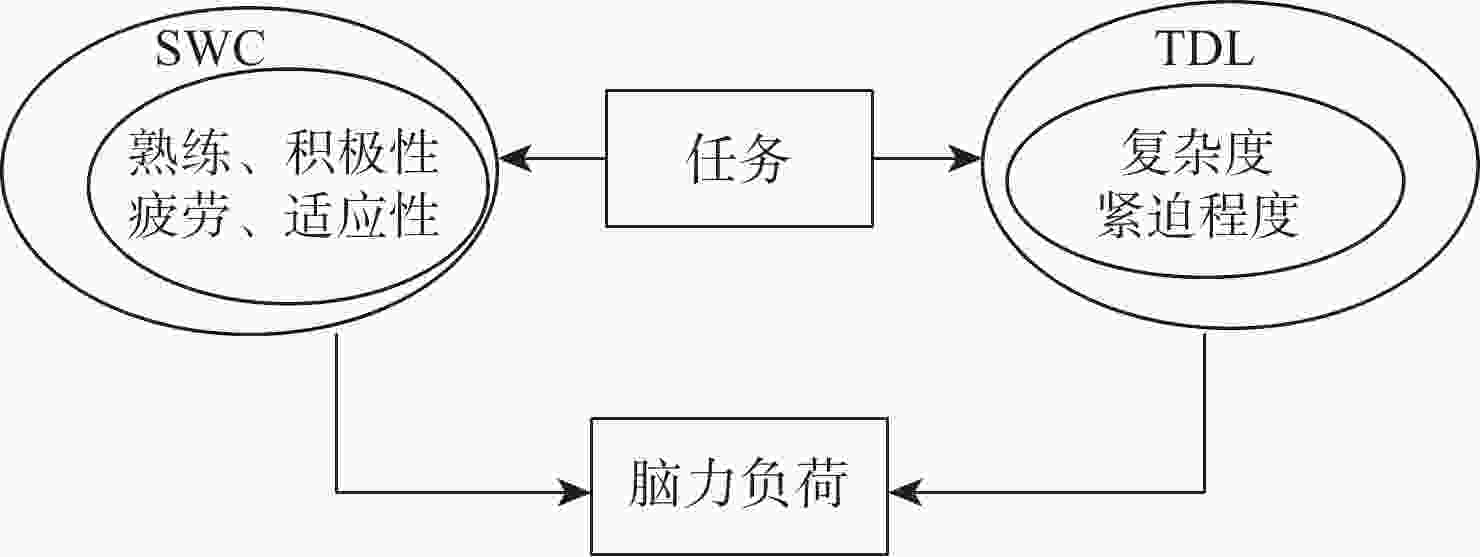
 下载:
下载:
